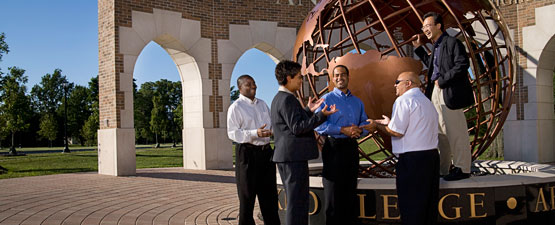Professional Dissertations DMin
Date of Award
2005
Document Type
Project Report
Degree Name
Doctor of Ministry
College
Seventh-day Adventist Theological Seminary
Program
Doctor of Ministry DMin
First Advisor
Ricardo Norton
Second Advisor
Alfonso Valenzuela
Third Advisor
Haroldo Guizar
Abstract
The biblical concept of discipleship consists in training and equipping people so they can become responsible Christians. The idea of equipping church members for the ministry appears often in the New Testament. According to Paul, the work of equipping is a joint effort between the Deity and the Christian leader: “And his gifts were that some should be apostles, some prophets, some evangelists, some pastors and teachers, to equip the saints for the work of ministry” (Eph 4:11, 12, NIV). The word “equipping” comes from the Greek katartizo, which means to prepare, equip, or perfect, as translated in other Bible versions: “For the perfecting of the saints for the work of ministry” (Eph 4:12, KJV). The Scriptures indicate that the work of perfecting belongs to God (1 Pet 5:10). Equipping members based alone on human strategies and methodologies does not meet the biblical discipleship teachings and lacks God’s perfecting power. Finite, imperfect men do not have the capacity to make perfect other human beings.
The Chino Spanish Seventh-day Adventist Church developed a school of discipleship to respond to Jesus’ Great Commission: “Go therefore and make disciples of all nations” (Matt 28:19). This school integrates human methodologies while encouraging activities that elicit God’s intervention and perfecting power. The idea of establishing a training school in the local church is very Adventist. In 1905, Ellen G. White wrote: “Every church should be a training school for Christian workers. Its members should be taught how to give Bible readings, how to conduct and teach Sabbath school classes, how best to help the poor and to care for the sick, how to work for the unconverted.” The Chino training school began officially in January 2002 with a recruitment program. Classes began to be taught in March of the same year, with thirty-five students who showed a contagious interest with their punctual attendance and active participation in the training sessions.
To measure the effect of the school on the retention and addition of new church members, statistics for the first two years of the operation of the school were compared with the previous seven years, before the existence of the school. The results in member retention were positive. The average rate of apostasy and missing members among church members during the seven years previous to the establishment of the school was 20.5 lost for every 100 who entered the church. In contrast, the losses were only 2.5 per 100 during the two years after the school began to operate. Other benefits of the school are seen in the establishment of new structures of participation, where a greater number of members can be actively involved in ministry, the attraction of inactive church members to church activities, and the formation of a new church in the neighboring city of Montclair. This church is growing numerically at a faster rate than the mother church.
Subject Area
Discipling (Christianity); Church growth--Seventh-day Adventists; Chino Spanish Seventh-day Adventist Church (Chino, California)
Recommended Citation
de la Cruz, Misael, "Desarrollo De Una Escuela De Discipulado En La Iglesia Del Séptimo Día De Chino, California" (2005). Professional Dissertations DMin. 404.
https://dx.doi.org/10.32597/dmin/404/
https://digitalcommons.andrews.edu/dmin/404
Creative Commons License

This work is licensed under a Creative Commons Attribution-No Derivative Works 4.0 International License.
DOI
https://dx.doi.org/10.32597/dmin/404/
Files over 3MB may be slow to open. For best results, right-click and select "save as..."



